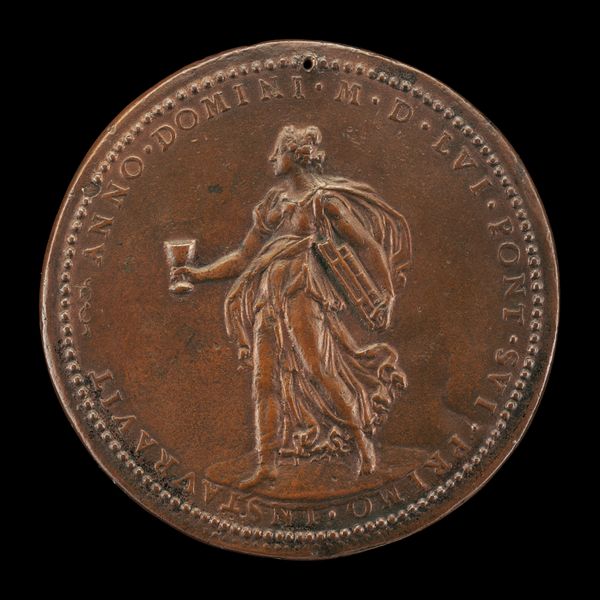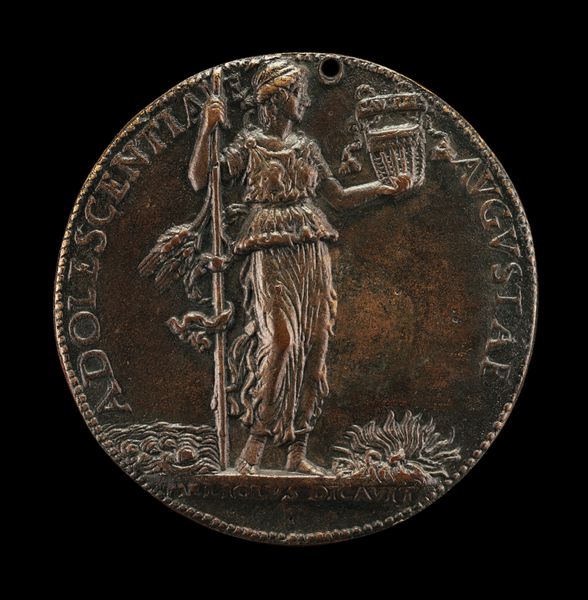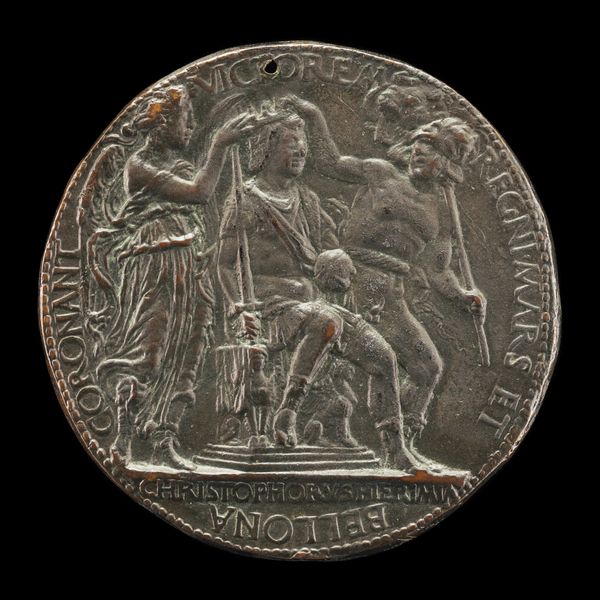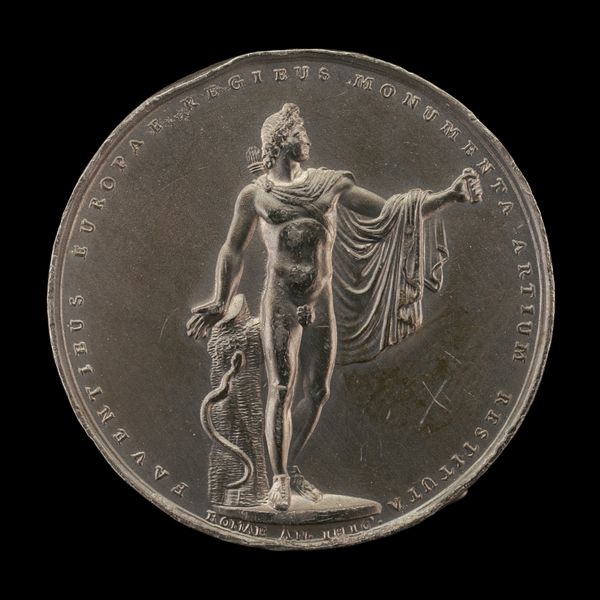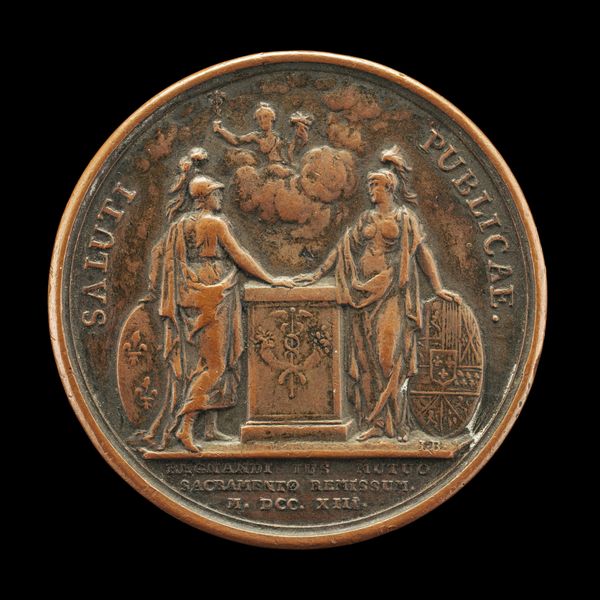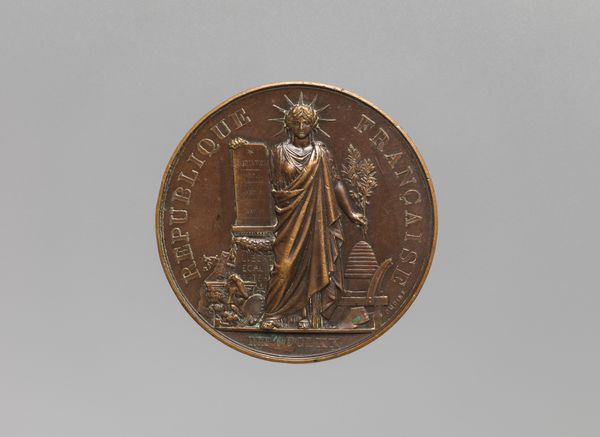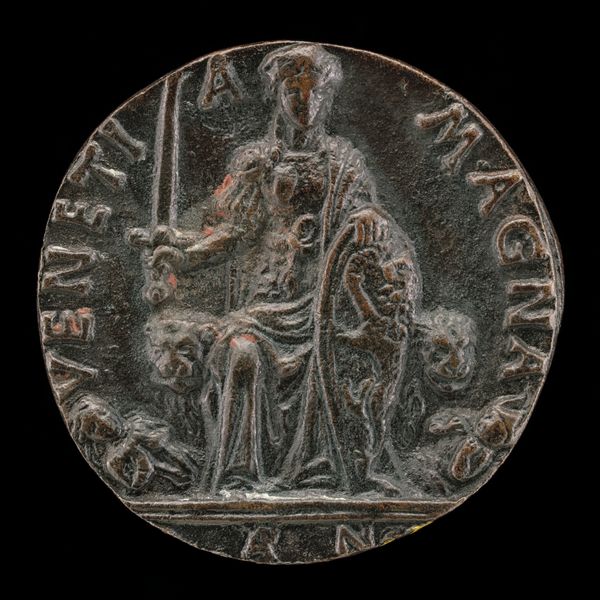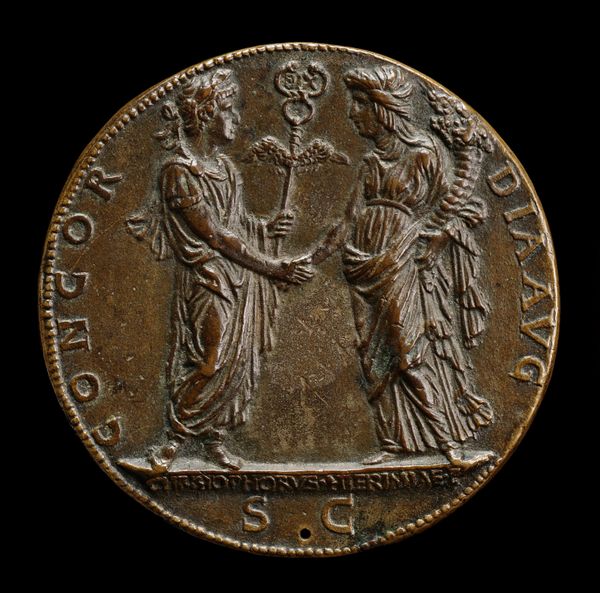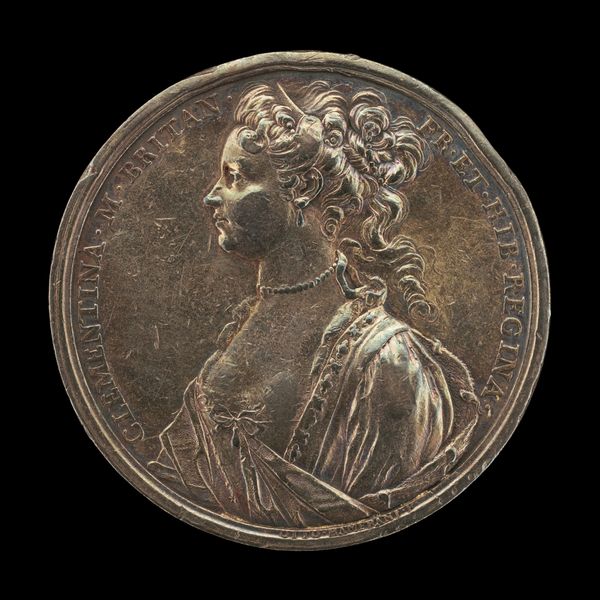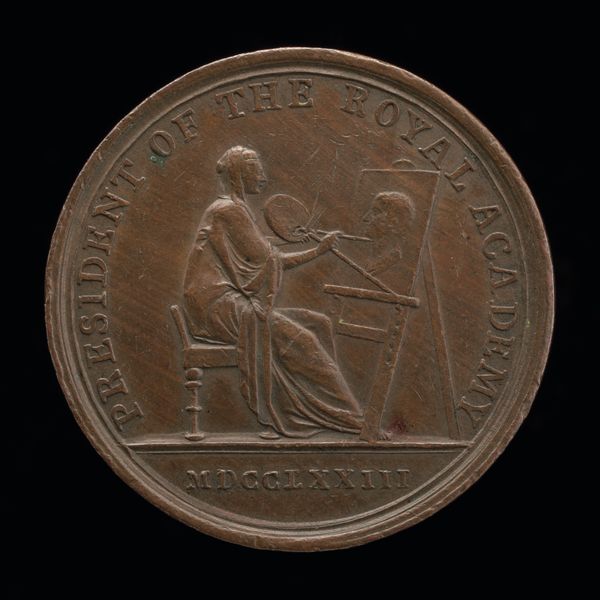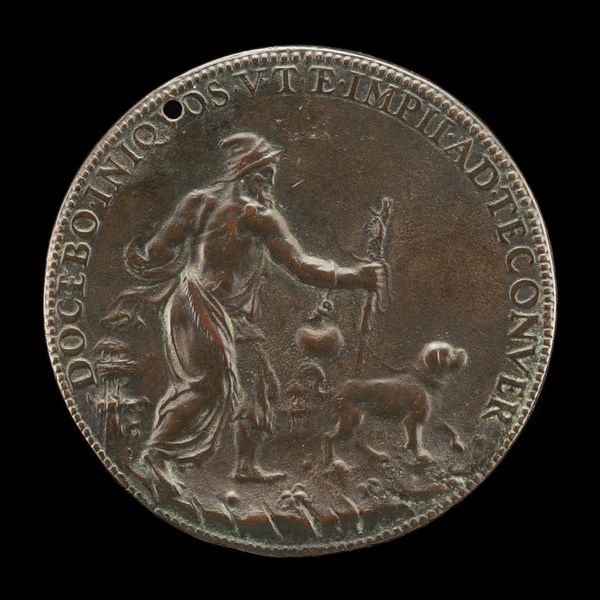![Architecture Holding a Compass and Square [reverse] by Caradosso Foppa](/_next/image?url=https%3A%2F%2Fd2w8kbdekdi1gv.cloudfront.net%2FeyJidWNrZXQiOiAiYXJ0ZXJhLWltYWdlcy1idWNrZXQiLCAia2V5IjogImFydHdvcmtzLzg4YWRmMGQ4LTNjZTctNGI2ZS1iMzY4LTgzNDYxZGIzYjNlNS84OGFkZjBkOC0zY2U3LTRiNmUtYjM2OC04MzQ2MWRiM2IzZTVfZnVsbC5qcGciLCAiZWRpdHMiOiB7InJlc2l6ZSI6IHsid2lkdGgiOiAxOTIwLCAiaGVpZ2h0IjogMTkyMCwgImZpdCI6ICJpbnNpZGUifX19&w=3840&q=75)
carving, metal, relief, bronze, sculpture
#
portrait
#
medal
#
carving
#
allegory
#
metal
#
sculpture
#
relief
#
bronze
#
sculptural image
#
figuration
#
carved into stone
#
sculpture
#
history-painting
#
italian-renaissance
Dimensions: overall (diameter): 4.34 cm (1 11/16 in.) gross weight: 38.23 gr (0.084 lb.) axis: 6:00
Copyright: National Gallery of Art: CC0 1.0
Curator: This striking bronze medal, "Architecture Holding a Compass and Square," was crafted by Caradosso Foppa around 1506. The Italian Renaissance piece features a high relief. Editor: It immediately strikes me as balanced, a harmonious assembly of figuration and architecture within the circular format, imbued with the weighty symbolism of the era. Curator: Indeed. The allegorical figure of Architecture dominates the composition, holding a compass and square. Observe how the arrangement facilitates the figure's direct interaction with both tools of construction, establishing symbolic mastery and order. Editor: And what about the architecture in the background? A centralized, domed building stands adjacent to the female personification. This recalls the historical building programs of High Renaissance popes such as Julius II, known for commissioning art for personal and political representation. Curator: The interplay of lines, curves, and planes showcases a mastery of form. See how the flowing drapery contrasts with the sharp, geometrical tools? Editor: Foppa is linking architectural ingenuity with virtue. Note the inscriptions "Fidei Cutas Labor Est," reinforcing labor, trustworthiness, and diligent application in achieving something worthwhile. The objects in the relief become symbols themselves within the composition. Curator: How do you perceive the figure, seated in this manner? The weight seems very carefully distributed... Editor: Seated atop roughly hewn rock and concrete stone as if in repose, she nevertheless embodies a calm, governing force; an individual who wields the symbolic compass and square with conscious agency. Curator: The reverse face invites contemplation regarding the nature of ingenuity, knowledge, and practical labor in achieving harmony in art and life. Editor: And perhaps reveals just how modern these questions remain even five centuries later.
Comments
No comments
Be the first to comment and join the conversation on the ultimate creative platform.
